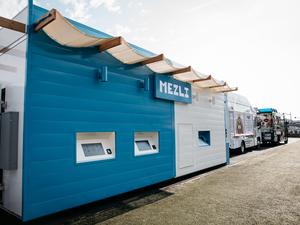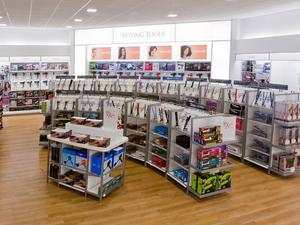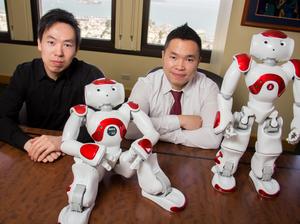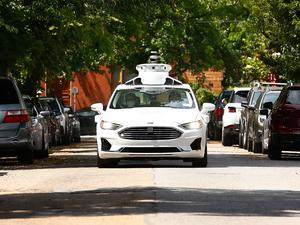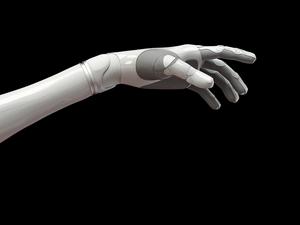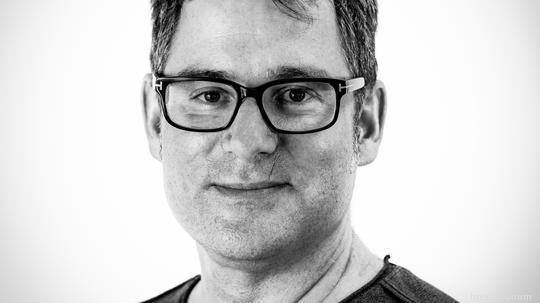
Yes, Nathan Harding has tried his own product.
“Yeah, a lot,” Harding said of Luum, a robot that applies fake eyelashes. “Unfortunately my wife is not a fan of me with lash extensions.”
Luckily, the extensions will naturally fall out in a few weeks. But Harding's goal is less about improving his own beauty routine and more about making the lash extension process easier and faster for others.
He co-founded Luum, legally known as Wink Robotics, with Rachel Gold, Lynn Heublein and Kurt Amundson in 2017 after learning about the booming business of lash extensions.
The Oakland-based startup has already raised $15 million in seed funding across four rounds, including $1 million in debt financing from SVB, and its investors include Ulta Beauty (NASDAQ: ULTA). It's now looking to raise $4.3 million through crowdfunding to commercialize the service.
Why turn to crowdfunding, though, after already raising traditional venture funding?
"Welcome to the world of robotics," Harding said. "Robotics is a harder thing to find financing for because it is more capital intensive upfront and that's actually why you see a lot of robotics startups turning to crowdfunding now."
Harding, 54, has extensive robotics experience. He studied mechanical engineering and economics at Carnegie Mellon in the late 1980s, worked at the university's Field Robotics Center and then spent some time at a startup spun out of the center called RedZone Robotics.
By 1991, he moved to the Bay Area to pursue a master's degree in mechanical engineering and ended up at Richmond-based Ekso Bionics, which went public through a reverse merger with PN Med Group Inc. in 2014 when he was CEO.
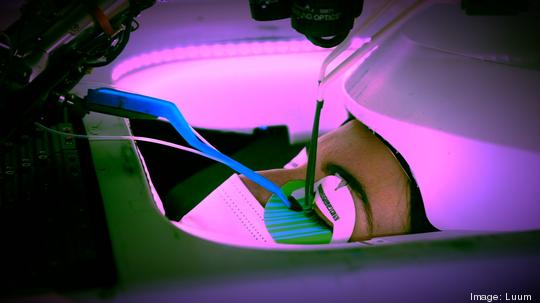
The reliance on crowdfunding, he said, also has to do with venture capitalists being wary of pouring lots of money into a field that hasn't yet proven its commercial viability.
"VCs have pulled back from robotics just because the autonomous vehicle projects they all invested so heavily in are so far behind," Harding said.
The company has already amassed a “gigantic IP portfolio” because so few others have tackled robotic eyelashes.
The eyelash extension market was worth more than $1 billion in 2018, according to a report from San Francisco-based Grand View Research, which encompasses all types of false eyelashes, and it's expected to grow more than 5% annually through 2025.
Applying false eyelashes is a delicate, manual process done either at home or by professional aestheticians.
Luum's robot is designed to make the process faster and less labor intensive, but it doesn't eliminate the need for a human touch.
"The process is much safer than a human eyelash extension process," Harding said. "We wanted a system where no matter what happened in software, the client is just completely safe and so we came up with a completely mechanical safety system."
To use Luum's machine, lash extension artists load false lashes into the machine and prep a client's eyelids before the robot plays its part.
Once a customer is under the machine and prepped, Luum's robot scans their eyelids to isolate each natural lash. It then selects a false eyelash with a "featherweight" wand, dips it in glue, places it in the correct spot and uses a blue light to dry it.
A slight finger tap or even a sneeze will cause the wands to simply fall and drift off with the grace of bird's feather, he said.
It takes 1.5 hours to complete a full set, comparable to most humans at salons right now, but Harding told me its newer generation of robots will be much faster.
Luum will launch a commercial pilot with a "top five cosmetic brand" in the first quarter of 2023, Harding told me, and its most advanced machine will launch later that year.
The company is targeting large beauty retailers that can afford the upfront hardware costs. Each lash machine will cost $125,000 to build and install in a salon. Luum will then charge each retailer half of that cost upfront and then about $30 per session — it's essentially a robotics-as-a-service model.
Under that pricing model, Luum will recoup its hardware costs after about six months and the retailer should break even after about five months, Harding told me.
The service is expected to be priced below the rates charged by major franchises. A quick search on Yelp showed that lash extensions can exceed $300 for a full set in San Francisco, though it depends on the type and volume of lashes requested, and salons will offer discounts for subsequent touchups.
About 300 to 400 people have already tried Luum's service at its testing facility in the East Bay, Harding said. It's currently located in Oakland but was previously based in Berkeley.
The company has just over a dozen employees, around half of whom are part-timers.
